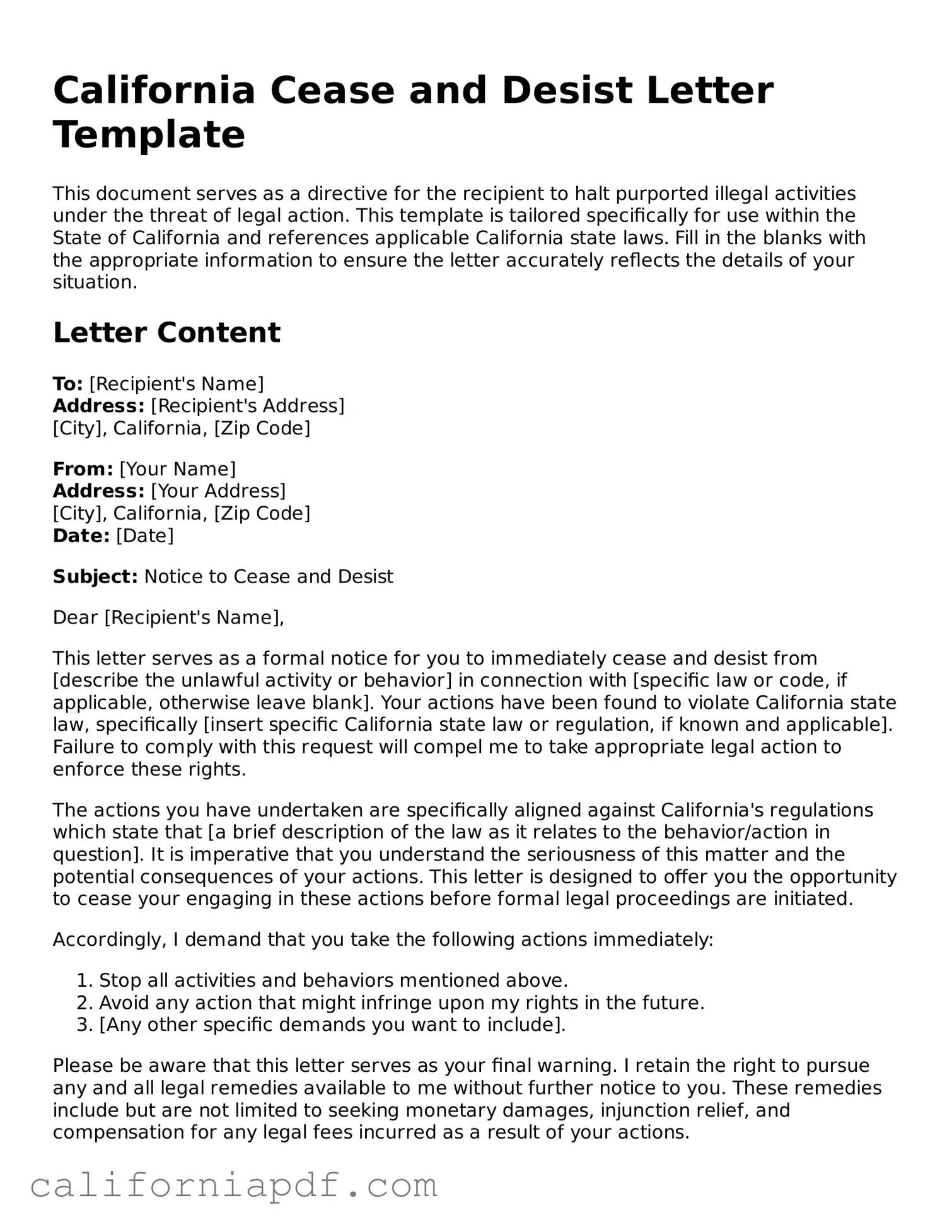California Cease and Desist Letter Template
This document serves as a directive for the recipient to halt purported illegal activities under the threat of legal action. This template is tailored specifically for use within the State of California and references applicable California state laws. Fill in the blanks with the appropriate information to ensure the letter accurately reflects the details of your situation.
Letter Content
To: [Recipient's Name]
Address: [Recipient's Address]
[City], California, [Zip Code]
From: [Your Name]
Address: [Your Address]
[City], California, [Zip Code]
Date: [Date]
Subject: Notice to Cease and Desist
Dear [Recipient's Name],
This letter serves as a formal notice for you to immediately cease and desist from [describe the unlawful activity or behavior] in connection with [specific law or code, if applicable, otherwise leave blank]. Your actions have been found to violate California state law, specifically [insert specific California state law or regulation, if known and applicable]. Failure to comply with this request will compel me to take appropriate legal action to enforce these rights.
The actions you have undertaken are specifically aligned against California's regulations which state that [a brief description of the law as it relates to the behavior/action in question]. It is imperative that you understand the seriousness of this matter and the potential consequences of your actions. This letter is designed to offer you the opportunity to cease your engaging in these actions before formal legal proceedings are initiated.
Accordingly, I demand that you take the following actions immediately:
- Stop all activities and behaviors mentioned above.
- Avoid any action that might infringe upon my rights in the future.
- [Any other specific demands you want to include].
Please be aware that this letter serves as your final warning. I retain the right to pursue any and all legal remedies available to me without further notice to you. These remedies include but are not limited to seeking monetary damages, injunction relief, and compensation for any legal fees incurred as a result of your actions.
I expect a written response from you within [number] days of receipt of this letter, confirming that you will cease all such activities immediately. Any response should be sent to the address listed above.
This letter is sent without prejudice to my rights, all of which are expressly reserved.
Sincerely,
[Your Name]
